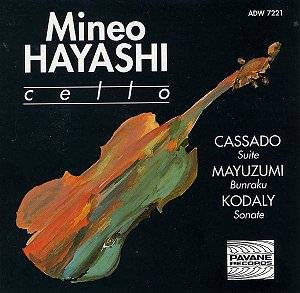 Composer: Adolphe Adam
Composer: Adolphe Adam
Works: La Filleule des fées
Performers: Queensland Symphony Orchestra/Andrew Mogrelia
Recording: ABC Studios, Brisbane, Queensland, Australia, February 1996
Label: Marco Polo 8.223734-35
Adolphe Adam, a pivotal figure in the French musical landscape of the 19th century, is often overshadowed by his contemporaries, yet his contributions to ballet and opéra-comique remain significant. La Filleule des fées, composed in 1849, stands as a testament to his ability to blend enchanting melodies with theatrical flair. Despite its historical obscurity, this ballet, with its elaborate staging requirements and whimsical narrative, invites listeners into a richly imaginative world. The work, inspired by the tale from the Marquis de St. Georges, features a blend of magic and moral lessons, encapsulated in the journey of the protagonist Ysaure, whose fate is shaped by the intertwining influences of benevolent and malevolent fairies.
The Queensland Symphony Orchestra, under Andrew Mogrelia’s baton, delivers a performance that captures the essence of Adam’s lush orchestration and melodic charm. Mogrelia’s interpretation is characterized by a vibrant rhythmic vitality that permeates the score. The strings, crisp and articulate, provide a buoyant foundation essential for ballet music, allowing the melodies to flow with a lightness reminiscent of a spring festival. Notably, the second act’s woodland setting is rendered with a delicate transparency that highlights the interplay between the solo woodwinds and the strings, conjuring the ethereal atmosphere that Adam envisioned. The orchestral color is particularly striking in the entr’acte linking the two acts, where the shimmering textures evoke a sense of magic.
The recording quality is commendable, with a sound engineering that respects the delicate nuances of Adam’s score. The balance between sections is expertly managed; the brass, often a challenge in orchestral recordings, modulates with sensitivity, enriching the tapestry of sound without overwhelming the more fragile woodwind passages. This attention to acoustic detail allows listeners to appreciate the intricate dialogues between the instrumental groups, a hallmark of Adam’s orchestral writing. The producers wisely opted to exclude excessive sound effects, allowing the music to speak for itself, enhancing the listener’s engagement with the narrative.
Comparatively, La Filleule des fées is less frequently recorded than Adam’s more celebrated works like Giselle. However, this Marco Polo release stands out as a valuable addition to the discography of French ballet music. While there are other recordings of Adam’s works, this performance captures the freshness of the score and serves as a reminder of Adam’s melodic inventiveness and theatrical sensibility. Specific passages, such as the enchanting “Danse des fées” in Act I, showcase Adam’s ability to weave delightful motifs that linger in the memory, a quality that should resonate with both connoisseurs and newcomers alike.
this recording of La Filleule des fées not only illuminates the charm of Adam’s musical language but also advocates for a greater recognition of his oeuvre. The Queensland Symphony Orchestra’s vibrant performance, complemented by excellent sound engineering, offers a compelling case for reviving this enchanting ballet. The recording encapsulates the essence of Adam’s artistry—a blend of transparency, charm, and theatricality—that deserves to be celebrated anew in the concert hall and beyond.



